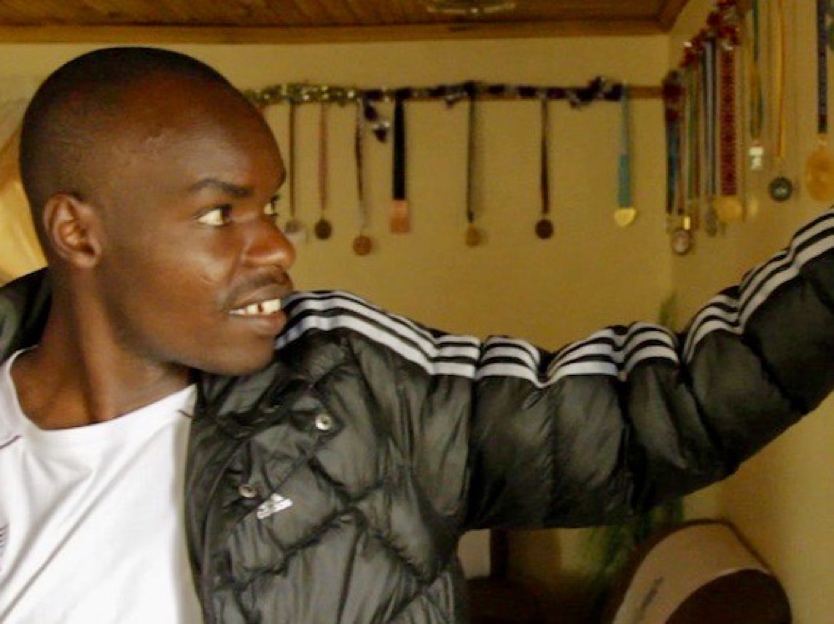In 2011 I spent a few months living in a run-training camp in Iten, Kenya. I was surrounded by some of the best runners in the world and had the chance to see what life was really like for aspiring athletes living in a typical Kenyan training compound. I lived in a compound owned by James Kwalia, a Kenyan-born athlete now running for Qatar, who has personal bests of 7:28 in the 3k and 12:54 for the 5k. Much of the training that the group did was based on the trickle-down of information from his own training regime. That meant that the daily routine of the athletes at the camp was fairly simple and uniform, but also very intense.
During the week, the first morning run took place around sunrise. It was a comfortable effort lasting anywhere from 30 to 60 minutes and would frequently end with a pace build-up. After tea and a small breakfast, the group would head to the track for another higher-intensity workout in the late morning. Then in the evening, there would often be another run similar to the morning when athletes would add extra running volume to the day at a very comfortable pace.
At the time, I was surprised to see athletes training with this kind of schedule. It was so wildly different than what I was used to, especially when it came to the frequency of runs during the week. Watching this kind of training in action made me consider one of the longstanding debates in the running world: the pros and cons of one run versus two (or three in their case) per day.
Since that time in Kenya, I have had a lot more coaching and running experience, but I still have not fully decided where I stand on the singles-versus-doubles debate. There seem to be positives and negatives to each. Let’s break those down with a focus more on real-world application and see if there might be an answer.
The Benefits of Singles (One Run Per Day)
- One longer run provides a sustained training stimulus that enhances endurance adaptations.
- Long efforts can be especially important to train the gut and develop a nutrition strategy for race settings.
- Adapting to the psychological stress of a longer run would better prepare a runner for a longer race.
The Benefits of Doubles (Two Runs Per Day)
- Time between runs allows for rehydration and glycogen replenishment, enhancing recovery.
- With better hydration and fueling, the quality of the runs could be improved.
- A busy work schedule may allow for two shorter runs during the day more easily than one longer run.
- A runner could increase weekly volume more easily with extra runs during the week.
- Short, easy runs can increase hormonal response and help with recovery from other higher-intensity workouts.
The Drawbacks of Singles
- One longer run could create more stress on the body and increase the chance of injury when running form breaks down.
- One longer run requires a longer unit of time during the day.
The Drawbacks of Doubles
- Increasing weekly volume may be too easy, and lead to overtraining injuries.
- Multiple shorter runs are less specific training for long-distance running.
Surprisingly there has not been much research on this topic, which is probably why the debate rages on. One book has provided several theoretical arguments in favor of doubles including increased growth hormone response (1). A laboratory study found that there was no increase in VO2max for two participant groups who were training once or twice per day when the overall volume was the same (3). In a study using mice, researchers found that mitochondrial and capillary development was similar between continuous exercise and discontinuous exercise groups (2). These studies would seem to indicate that both methods, singles and doubles, create similar physiological improvements.
So what does this all mean in the real world? Obviously we aren’t mice, and we also don’t live in a laboratory. In my experience, I have found doubles to be a helpful addition to my training plan when I need to get extra volume in during the week, but I have other commitments that get in the way of one longer run. I have also found that splitting my total running time into morning and evening runs has allowed me to benefit from food and fluids during the course of the day, and made my second run more enjoyable.
However, if I am in a building phase of my training, I try to avoid doubles to make sure I am not overdoing it. I also think there is no substitute for big long runs when preparing for a long-distance race like a trail ultramarathon. The benefits of a true long run just can’t be duplicated with two shorter runs, even if the distance is the same.
I think both singles and doubles have their place. Doubles are a great way of getting in some more volume while feeling good, but they can never replace the benefits of singles. When scheduled correctly, I don’t think there needs to be an argument for or against doubles or singles. Adding in a few easy doubles during the week can be a comfortable way to maintain a high volume of training. When those days are supplemented by a race-specific long runs to improve endurance, increase psychological toughness, and practice fueling, we can develop realistic and beneficial training plans.
These days, when I think back to those runners I got to know in Kenya, I realize that they were really just doing what worked for them, which is the most important aspect of this whole debate. There weren’t coaches out there on the dirt roads telling them to do their evening run at 11:00-minute-mile pace. Those runs were slow and easy because that is what the athletes felt like doing. In order to balance intensity and volume, they would run slow when their bodies were tired, and drink tea when they needed a quick boost of energy between workouts. It is a nice reminder that there is no perfect training plan for everyone, and deciding the “ideal” training frequency for all runners neglects the fact that we are all very different people with different lives. What works for one person might not work for another, but we can at least try out new things and see if they make sense for us. So give doubles a chance if you haven’t, or try sticking to singles if you’re a frequent doubler. Each of us is an experiment of one!
Call for Comments
- What pros and cons would you add to or emphasize from these lists?
- Do you generally run once or twice per day? Can you share your reasoning behind that choice?
References
- Magness, S. (2014). The science of running: How to find your limit and train to maximize your performance. San Bernardino, CA: Origin Press.
- Malek, M. H., Hüttemann, M., Lee, I., & Coburn, J. W. (2013). Similar skeletal muscle angiogenic and mitochondrial signalling following 8 weeks of endurance exercise in mice: Discontinuous versus continuous training. Experimental Physiology, 98(3), 807-818.
- Mostardi, R. A., & Campbell, T. A. (1981) Effects of training once vs. twice per day and improvement in maximal aerobic power. Ohio Journal of Science, 81(5), 207-211.



